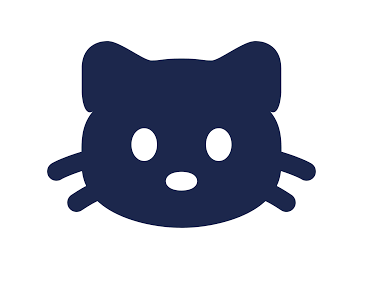How much food does a cat need calculator?
Feeding your cat the right amount of food is not just about keeping them full; it’s about ensuring they get the nutrients they need to thrive. Cats are obligate carnivores, meaning their primary nutrition comes from meat-based proteins. Overfeeding can lead to obesity-related illnesses like diabetes, while underfeeding can cause deficiencies that affect their coat, energy, and overall health. Find deatils here on How much food does a cat need calculator.
Factors Affecting a Cat’s Food Needs
Age and Life Stage
- Kittens need more calories and nutrients for growth. They should be fed multiple times a day.
- Adult cats require maintenance calories, depending on their weight and activity level.
- Senior cats might need fewer calories as their metabolism slows.
Weight and Body Condition
An ideal weight for most domestic cats ranges between 8 to 12 pounds, but this varies by breed. Use a body condition score (BCS) chart to assess if your cat is underweight, overweight, or in perfect condition.
Activity Level
A playful, active cat will burn more calories than a sedentary one. Indoor cats typically require fewer calories than outdoor or working cats.
Breed
Larger breeds like Maine Coons may need more food compared to smaller breeds like Siamese cats.
Health Considerations
Cats with specific health conditions, such as hyperthyroidism or obesity, may require special dietary adjustments.
Understanding Cat Food Labels
Before you calculate how much to feed your cat, it’s essential to understand cat food labels. Here’s a quick breakdown:
- Calories (kcal): The energy provided by the food. Always check the kcal per serving.
- Dry Food: Typically higher in calories per gram.
- Wet Food: Contains more moisture and is lower in calories per gram.
Ensure the food meets the standards set by the Association of American Feed Control Officials (AAFCO) for balanced nutrition.
How much food does a cat need calculator?
Step 1: Calculate RER
The Resting Energy Requirement (RER) is the starting point. Use the formula:
RER (kcal/day) = 70 × (ideal body weight in kg)^0.75
Example for a 4-kg cat:
RER = 70 × (4)^0.75 ≈ 200 kcal/day
Step 2: Adjust for Activity Level
Multiply the RER by a factor depending on your cat’s activity and life stage:
- Sedentary adult: RER × 1.2
- Active adult: RER × 1.4
- Kittens: RER × 2.0–2.5
Example for a sedentary 4-kg cat:
200 × 1.2 = 240 kcal/day
Step 3: Divide by Food’s Caloric Content
If the cat food has 400 kcal per cup (dry food), the daily portion would be:
240 ÷ 400 = 0.6 cups per day.
Using a Cat Food Calculator
Online Tools
Online calculators simplify this process. Input your cat’s weight, activity level, and food brand to get an accurate estimate.
Manual Method
Use the RER formula and your cat food’s caloric information to calculate portions manually.
Recommended Feeding Guidelines
Wet Food
- Typical: 1 small can (85g) contains 70–100 kcal.
- Feed 2–3 cans daily for a 4-kg adult cat.
Dry Food
- Typical: 1 cup = 300–400 kcal.
- Feed about ½–¾ cup per day.
Mixed Feeding
Combine wet and dry food, ensuring the total kcal aligns with your cat’s needs.
How to Monitor Your Cat’s Weight and Health
- Weigh your cat monthly.
- Look for signs of overfeeding, such as weight gain or lethargy.
- Signs of underfeeding include visible ribs and lack of energy.
Adjusting Food for Different Life Stages
Kittens
Feed kitten-specific food with higher protein and fat. Offer 3–4 meals a day.
Adults
Stick to portion-controlled meals twice daily.
Seniors
Switch to senior formulas with lower calories but adequate protein.
Special Diets for Cats
- Obesity Management: Low-calorie diets and measured portions.
- Health Conditions: Consult your vet for conditions like kidney disease or diabetes.
Common Mistakes in Cat Feeding
- Free Feeding: Leaving food out all day can lead to overeating.
- Over-reliance on Treats: Treats should be no more than 10% of daily calories.
Practical Tips for Feeding Your Cat
- Feed at the same times daily.
- Measure portions accurately with a kitchen scale or measuring cup.
- Store food properly to maintain freshness.
FAQs on Cat Feeding
- What if my cat is still hungry?
Gradually increase food by 10%, ensuring they aren’t overeating. - Can I feed my cat human food?
Avoid harmful foods like onions, garlic, and chocolate. Stick to vet-approved treats. - How do I transition between foods?
Mix the old and new food over 7–10 days to prevent stomach upset. - Can cats eat only dry food?
Yes, but ensure they have plenty of water to avoid dehydration. - What if my cat skips a meal?
Occasional meal skipping is fine, but consult a vet if it happens frequently.
Conclusion
Feeding your cat the right amount of food is crucial for their health and happiness. By understanding their nutritional needs and using tools like the RER formula or a cat food calculator, you can ensure they get the perfect portion every day. Regularly monitor their weight and adjust as needed for a long, healthy life.
